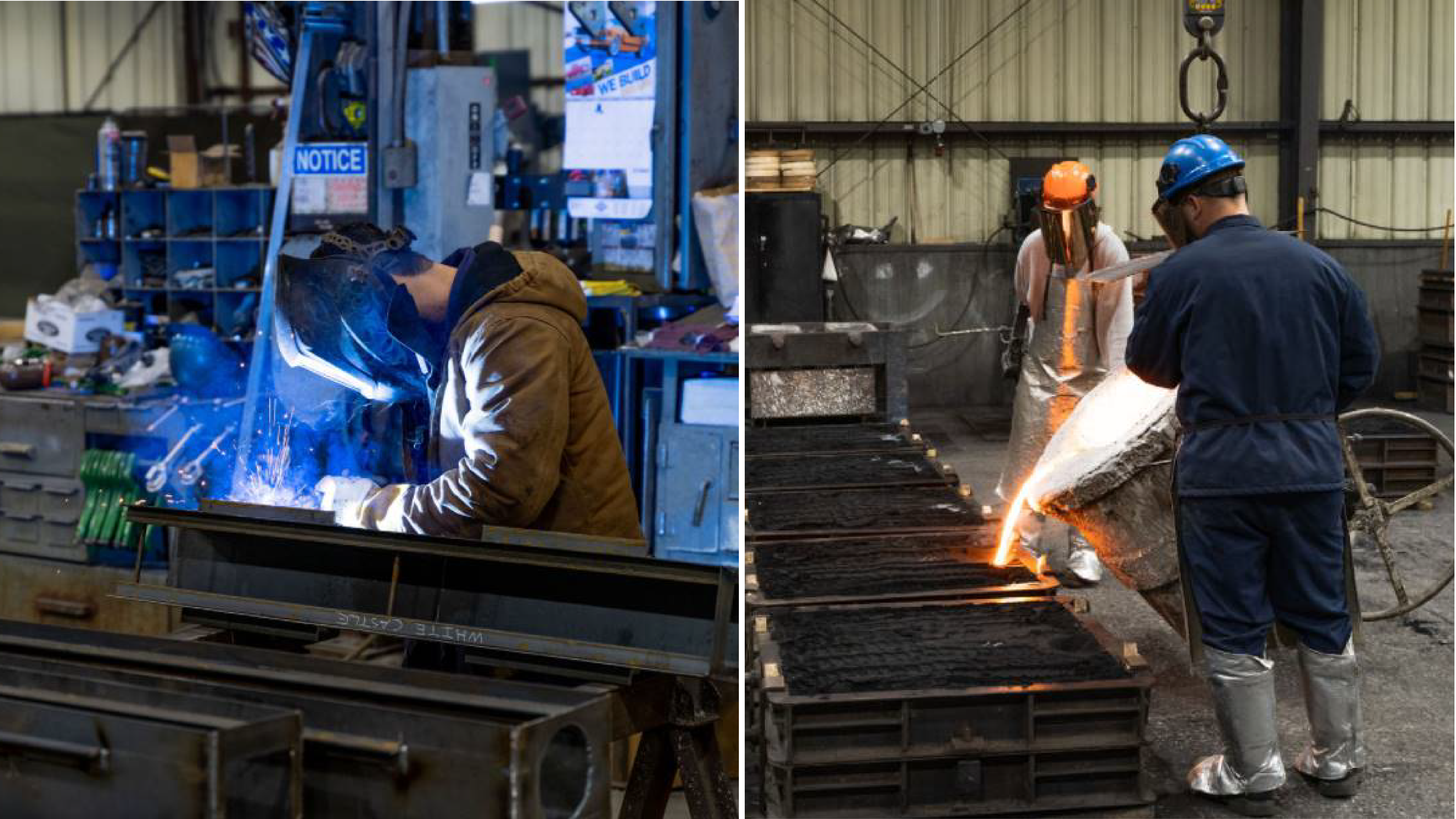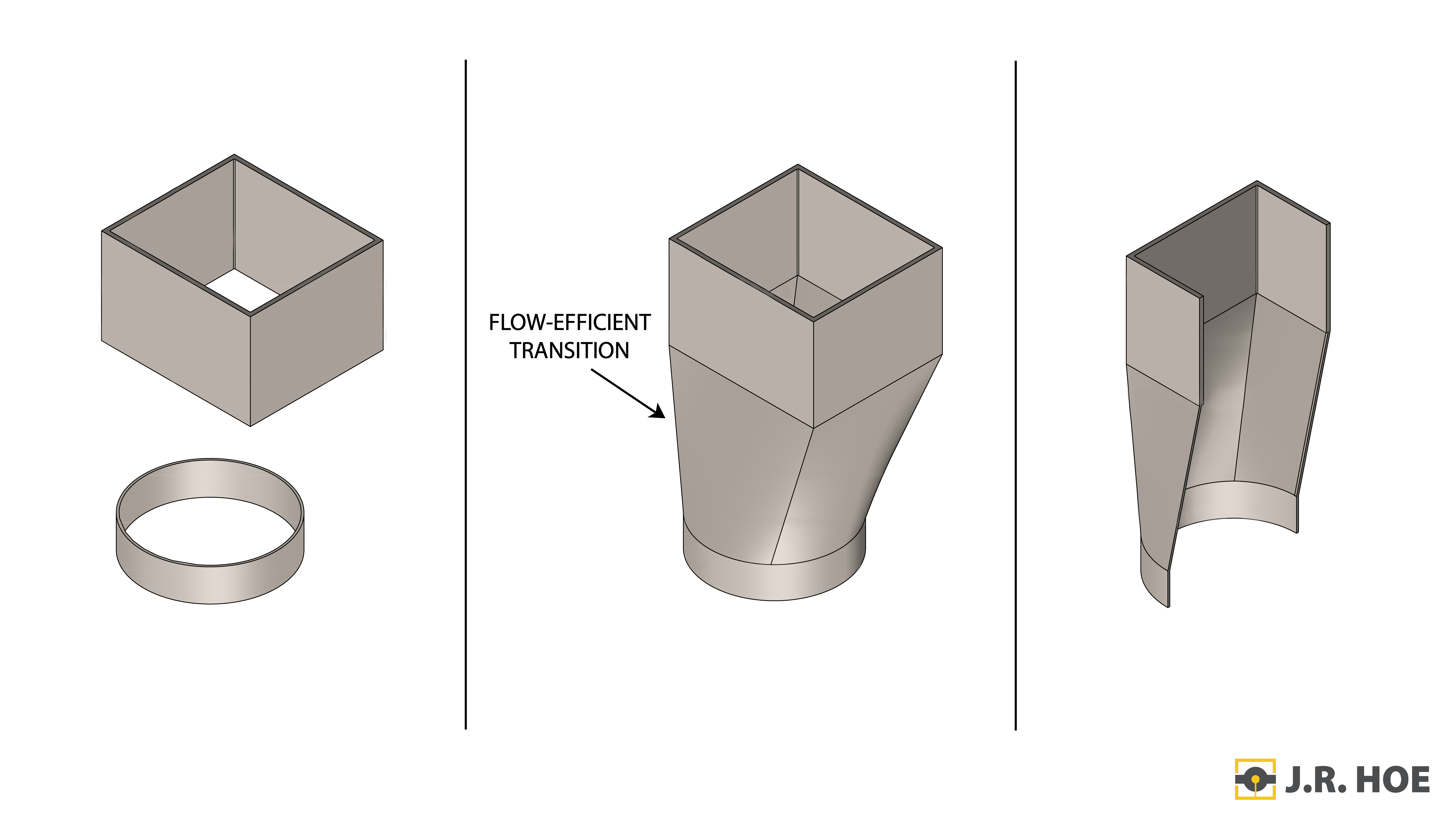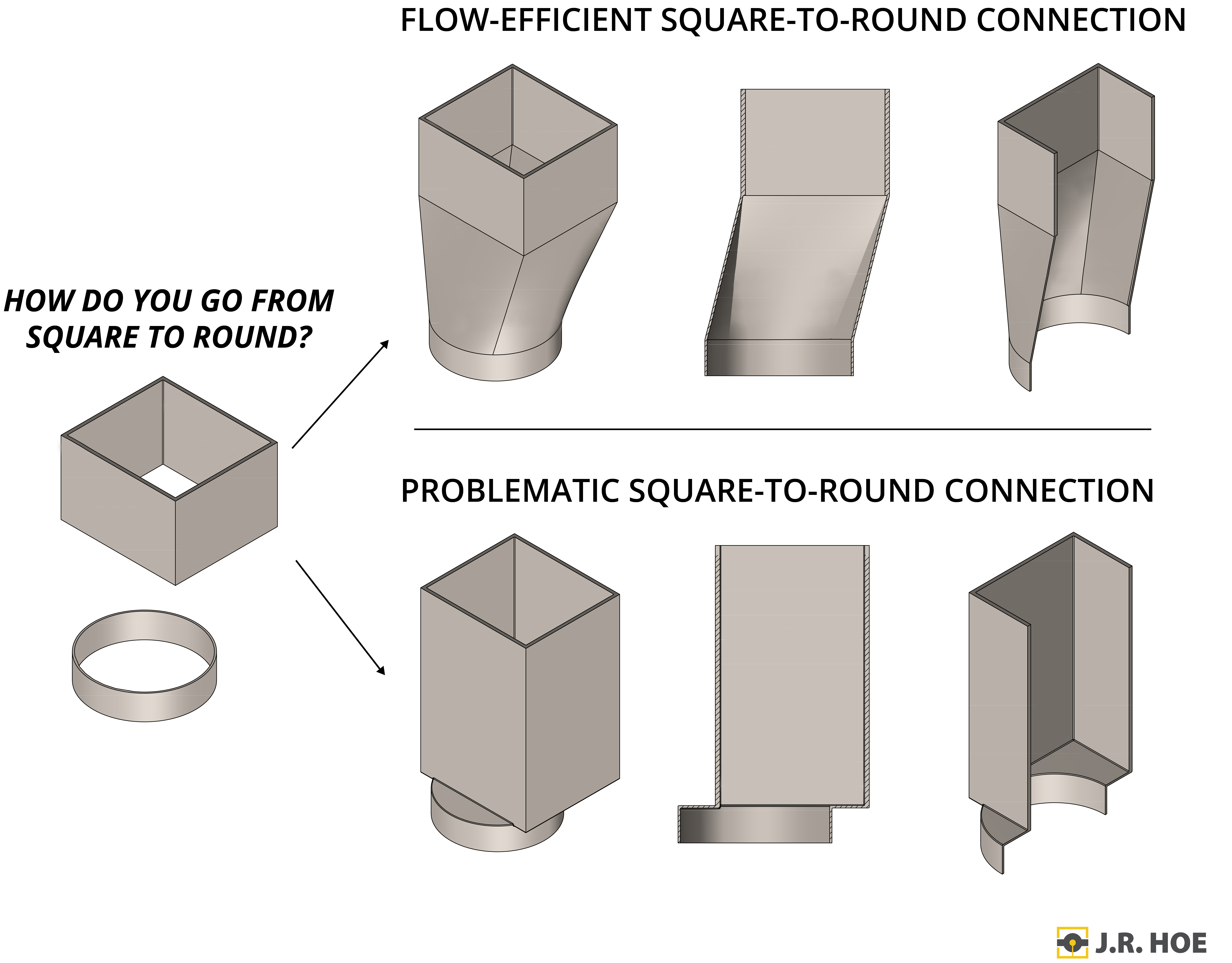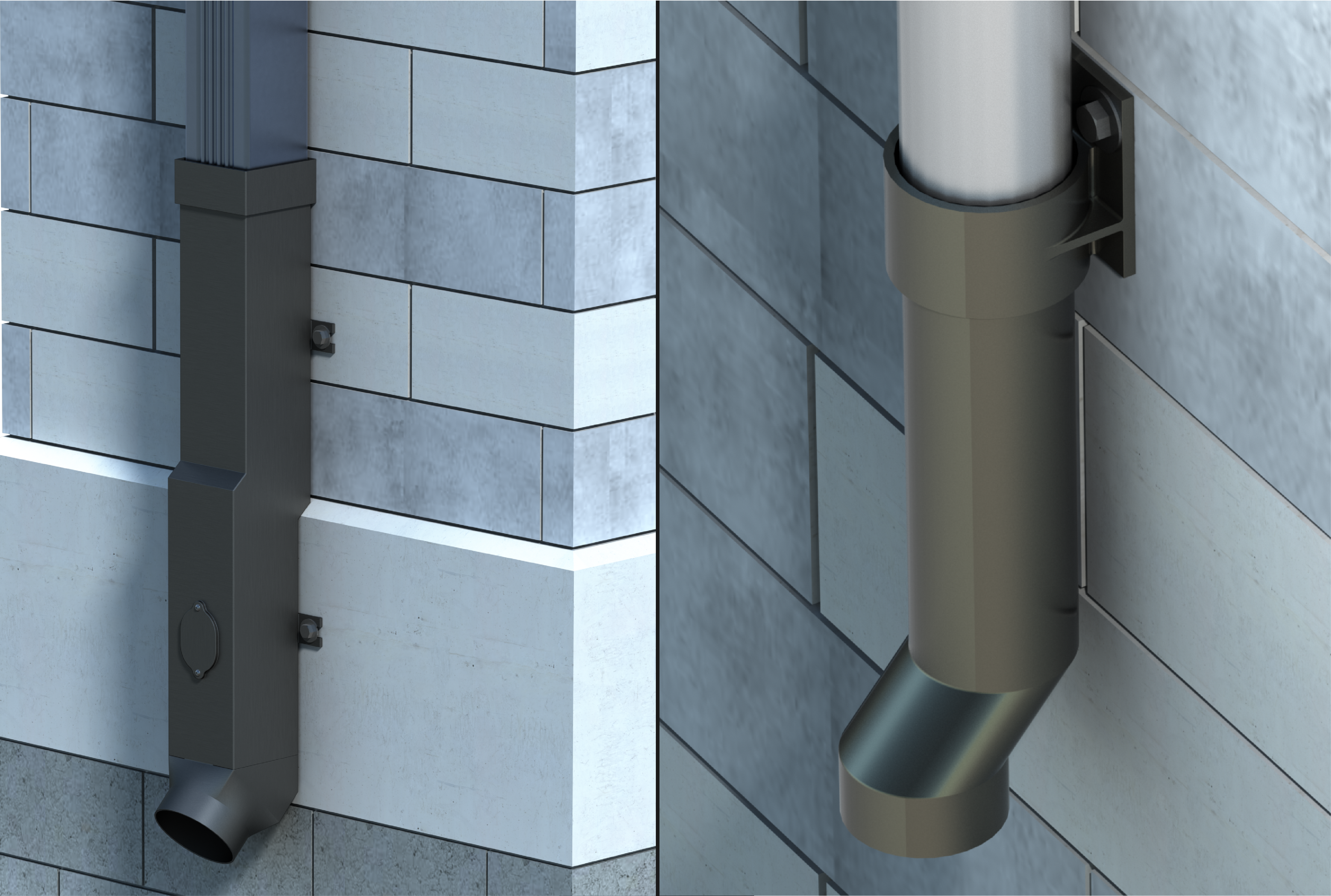Steel Fabricated Downspout Boots
Published on: 01/27/2022 12:13 PM
Fabricated Downspout Boots – Proper Design and Construction
In addition to the 100+ years of experience producing high quality iron castings for a wide range of industries, J.R. Hoe is an AISC certified supplier of steel, aluminum and stainless steel fabrications for infrastructure projects across the US. As a leading manufacturer of drainage products using metal fabrication as well as metal casting processes, we are uniquely familiar with the advantages and drawbacks of each material type and production method. The following is a practical assessment of the design and fabrication practices required to produce a successful fabricated downspout boot along with some insights into the differences between metal fabrication and metal casting.
Metal Casting vs Metal Fabrication
As discussed in a previous blog post, the superiority of cast iron as the ideal material for downspout boots is undeniable. From its engineering properties and durability to corrosion resistance and aesthetic appeal, ASTM A48 Class 30B cast iron checks all the boxes in satisfying the functional requirements of a downspout boot. Despite the clear advantages of cast iron, downspout boots can be produced as a fabricated, or welded, part using various alternative materials as long as the common pitfalls of the fabrication process are avoided and proper design practices are followed.

Steel fabrication involves the process of cutting, bending and welding standardized steel products such as plate, tube, channel and beams into the necessary shapes. Having to cut and weld together flat and round pieces of material is not ideal when it comes to producing a part with complex geometric features. An example of complex geometry is found at the outlet of a downspout boot, where various radii meet to form a change in flow direction as well as a square to round transition. This type of product design is easily achieved using the casting process, which involves pouring molten iron into a mold cavity and letting it cool to form the part. Creating this contoured and seamless profile as a fabrication, however, is doable but requires a bit more fabrication know-how and expertise.

The general design of a downspout boot consists of a square or rectangular section (the body) that joins a round section (the outlet). The round outlet is offered in various styles with the offset configuration being the most common. In order to join any square end with a round end a transition piece must be fabricated that allows the corners of the square end to connect to the vertices of each corresponding quadrant of the round end. The transition piece is fabricated by bending the material to form a series of triangles laid side-by-side and joined at a seam, providing a small section of material that aligns with and connects the square opening on one end and the round on the other. The resulting fabrication provides an adequately flow efficient interior.

While this age-old technique in designing a square to round transition is widely accepted and relied upon by engineers and fabricators in a wide range of applications, few if any fabricated downspout boots on the market offer the correct flow profile that this method provides. Instead, the section of round tube is typically attached directly onto the bottom of a square box in a crude design that results in a highly problematic flow profile. This inferior process is especially concerning when A. the round outlet is smaller than the square body, and B. when the round outlet is offset from center, both scenarios resulting in potentially drastic reduction in flow capacity.

Flow efficiency is a characteristic that applies to any product required to facilitate water flow. From pump housings and plumbing fittings to bridge drains and – you guessed it! – downspout boots. A smooth interior flow profile is key in successfully directing large volumes of water where it needs to go. This is certainly true of downspout boots whose job it is to not only receive the flow of roof drainage by way of the downspouts but to redirect that water and connect to the underground drainage system.
Commercial buildings (especially schools, warehouses, military facilities) often have roof areas in excess of 100,000 sq. feet. Buildings of this size generate an enormous amount of rainwater that must be successfully diverted from the downspouts into the underground drainage system. Turbulent and disrupted flow caused by misaligned joints, boxy interior walls, sharp bends and dimensional inconsistency may result in obstructed flow, clogging or connection failure due to excessive hydraulic pressure.
The metal casting process is ideal for creating the contoured and curvilinear lines required to ensure a smooth flow path. Producing a successful downspout boot by welding together flat and round pieces of steel, aluminum or stainless steel (as required by the fabrication method) is not ideal but it is possible using the correct fabrication technique as explained above.
When Fabrication Makes Sense: Custom Sizing
One difference between the metal casting process as compared to metal fabrication is the tooling requirement for each process. Iron casting relies on an engineered pattern used to produce each mold. Due to the engineering hours and skilled labor involved, patterns sometimes represent a considerable investment. Steel fabrication on the other hand may be performed without tooling, as the process involves less engineering and the fairly straightforward practice of shaping and welding various pieces of premanufactured metal together.
As a result, when fabricated downspout boots are properly designed and manufactured, they offer an advantage to customers with non-standard sizing requirements. Downspout boots with fully customized dimensions and specially designed features may be produced using the fabrication method without the need for pattern/tooling.

J.R. Hoe offers custom fabricated downspout boots in mild steel, galvanized steel, aluminum and stainless steel. With extensive experience in product design for specialty drainage applications, our fabricated downspout boots are properly fabricated to ensure a smooth and flow efficient interior profile. To request a custom or fabricated downspout boot for your project please contact us at info@downspoutboots.com or 1-800-245-5521.
Recent Posts
Keys to Selecting the Right Downspout Boot for Your Job
6 Tips for Choosing the Correct Downspout Boot for Your Job Cast iron downspout boots p...Steel Fabricated Downspout Boots
Fabricated Downspout Boots – Proper Design and ConstructionIn addition to the 100+ years o...Downspout Guards (aka Downspout Protectors) vs. Downspout Boots
Downspout guards are an alternative to downspout boots used in protecting exterior downspouts on com...Causes & Effects of Downspout Damage
Broken or deteriorating downspouts and downspout connections can have significant adverse effects on...Fire Station Building Design and the Role of Downspout Boots
Various architectural design elements must be factored into the construction of public safety facili...Categories
All
» Cleanout Access
» Custom Downspout Boots
» Downspout Boot Coatings
» Downspout Boot Overview
» Downspout Boot Sizes
» Sustainability
» Recycled Content and LEED
» Advantages of Cast Iron
» Fire Station Design
» Dowspout Damage
» Downspout Guards vs. Downspout Boots
» Steel Fabricated Downspout Boots